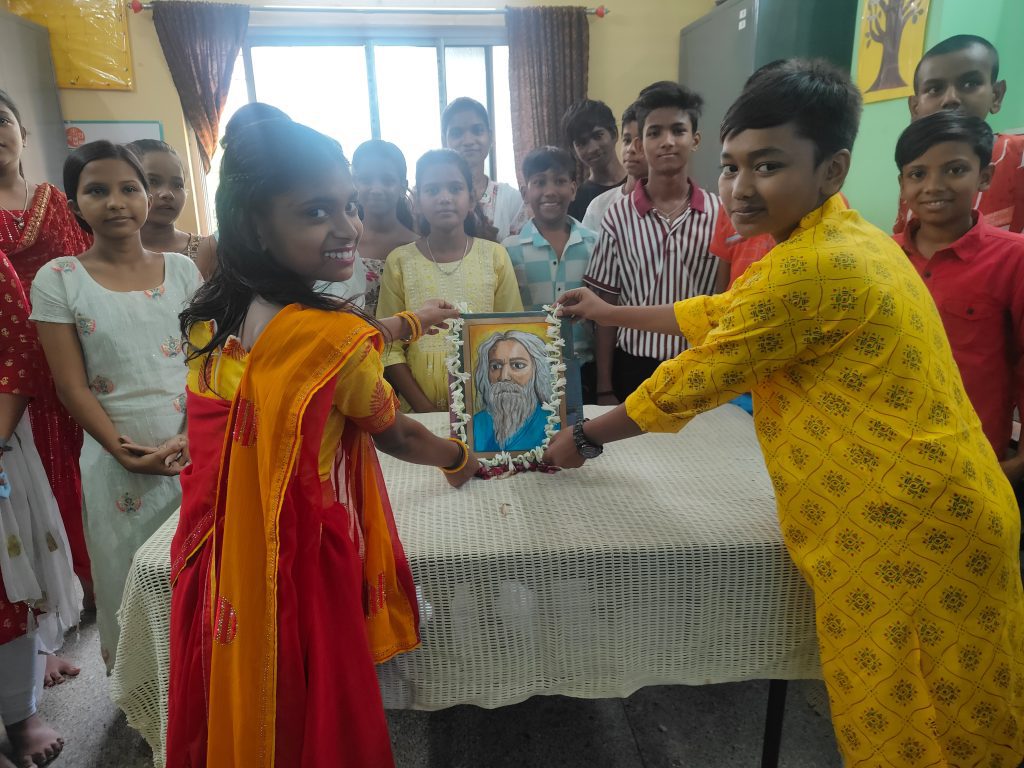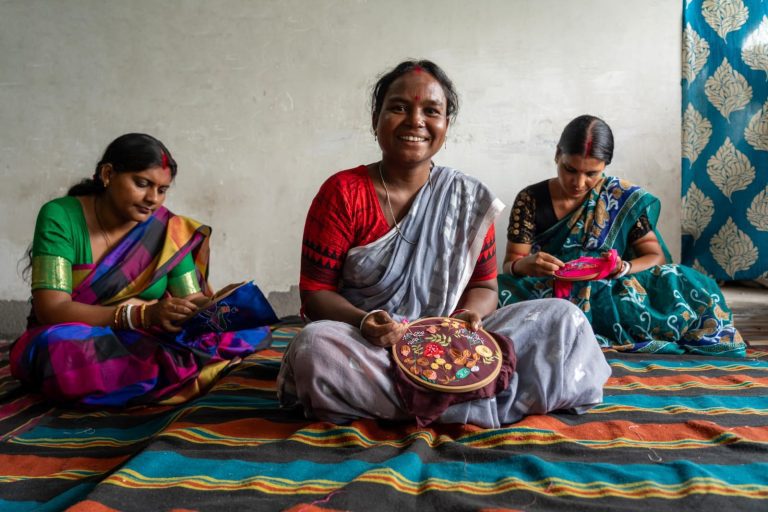Unity in Verse: Celebrating Tagore Across Borders
A Cross-Cultural Tribute to Gurudev, Linking Hearts from Bengal to Haryana and Delhi

In the month of May, Literacy India brought history to life by commemorating Rabindra Jayanti—the
birth anniversary of Rabindranath Tagore, Bengal’s towering literary figure. What began in the heart of Kolkata and Purulia, spread its wings to Mandkola, Mullahera, and Chhawla, connecting diverse geographies in one shared tribute. This cultural exchange wasn’t just about performances—it was about learning, identity, and unity. Through Zoom, children from all centres participated in a seamless celebration featuring Rabindra Sangeet, poetry, storytelling, and traditional dance.
They also learned about Tagore’s vision of Shantiniketan, where education meets nature, art, and the spirit.
“This is the first time our children saw a celebration from the East. It sparked curiosity and connection,” shared Sweta, Centre Head from Mullahera. The session was both reflective and participatory, with floral tributes, speeches on Tagore’s role in India’s freedom, and discussions linking Social Studies to real-life movements—like Tagore’s protest of the Jallianwala Bagh tragedy.
The event closed with all centres standing tall to sing “Jana Gana Mana,” Tagore’s own gift to the
nation—symbolising a deeper unity that education can build.
Key Learnings from Shantiniketan Ethos:
- Education through creativity and nature
- Unity beyond boundaries
- Learning with hands, heart, and soul
- Art as a lifelong teacher
Through this initiative, Literacy India reminded us that culture is not confined by geography. It travels through voices, screens, and songs, leaving behind a spark of curiosity and
pride.
Harmonizing Educational Cultures: Literacy India Goes Global with Cross-Continental Classrooms
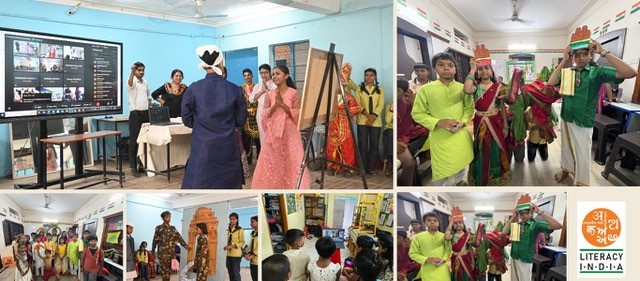
Harmonizing Educational Cultures Organised by: Greece
Participating Countries and Schools: Greece, Poland, Tanzania, Rwanda, Portugal, Uganda, India –
Literacy India (Gurugram, Hyderabad, Kolkata)
Where Festivals Feel Familiar
It began with a question: How different can our traditions truly be? As students from Greece, Poland, Portugal, Tanzania, Rwanda, and India met on screen through the Harmonizing Educational Cultures project, they quickly discovered something extraordinary—despite distances and dialects, their festivals often carried the same soul.
When Greece showcased its Martaki bracelet—a red and white thread tied by mothers for protection—Indian students were reminded of Rakhi, a sacred sibling bond. Poland’s spring ritual of burning the Marzanna doll seemed eerily similar to India’s Holika Dahan. Portugal’s Carnival parades mirrored the colour, music, and euphoria of Holi. From Clean Monday kite-flying in Greece to Basant Panchami skies in India, the winds of tradition were clearly shared.
This recognition brought smiles, curiosity, and camaraderie. As one Literacy India student said, “It was like looking in a mirror—only the costumes changed.”
Bringing Literacy India Centres to the Global Stage- Cultural Ambassadors
Gurugram (Bajghera): Literacy India students showcased their 4E model—Education, Empowerment, Employment, and Environment—through cultural narratives, traditional Haryanvi meals, and mock parliaments. Yoga, STEM activities, and storytelling brought their school alive for peers overseas.
Hyderabad (Bowenpally): Students paraded Telangana’s identity with pride, sharing stories of Bonalu, Bathukamma, and Ugadi. They dressed the part and danced with joy, making learning immersive.
Kolkata (Chingrighata): Known for its cultural flair, this centre celebrated Rabindra Jayanti, Durga Puja, and Bengali cuisine. Students proudly explained their rituals and performed traditional dances.
Lessons Beyond Geography
- Cultural Awareness: Many students had never heard of Martaki or Fado. Now, they could name festivals from five continents—and explain how they resemble their own.
- Confidence and Curiosity: Shy students who once hesitated to speak now led sessions with confidence. The pride in representing their own traditions fuelled a newfound enthusiasm for global learning.
- New Friendships, Lingering Gaps: While the exchange brought excitement, it also revealed challenges—language barriers, lack of discipline from some participants, and missed chances for real conversations.
Reflections from the Classroom
Kolkata Teachers: “This project reminded us how valuable cultural confidence is. Our students now ask questions they never did before.”
Hyderabad Team: “It was thrilling to watch our children evolve. They learned that culture isn’t just taught—it’s shared, worn, spoken, and danced.”
A Living Mosaic of Traditions
What made this project special was not just the presentations—it was the moment when a Tanzanian dance reminded an Indian student of their village fair, or when a Portuguese student laughed at the same joke as a girl in Hyderabad. These glimpses into shared humanity turned screens into windows, and classrooms into bridges.
Students learned that diversity is not a wall—it is a doorway. And when walked through with open eyes and open hearts, it leads to a place of connection, pride, and global friendship.
Literacy India’s participation in Harmonizing Educational Cultures reflects its mission to build not just scholars, but compassionate global citizens—children who carry the wisdom of their roots while reaching for the sky.
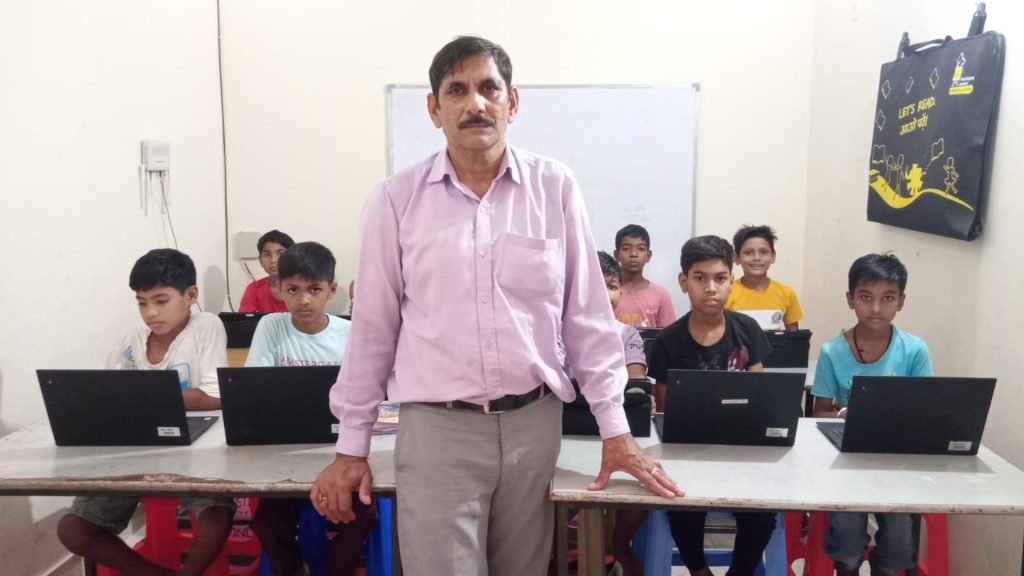
Mentor of Many: Kanwarpal, the Steady Heart of Literacy India
In the ever-growing fabric of Literacy India, there are threads that quietly hold the structure together—Kanwarpal is one such thread. A native of Baghpat, Uttar Pradesh, he joined Literacy India back in 2008, not knowing that what began as a support visit for his nephew in Gurgaon would turn into a lifelong calling.
Starting as a Mathematics teacher, Kanwarpal witnessed the transformation of dusty blackboards and community spaces into Smart Classrooms—and along with them, a new generation of learners. Coming from a family of farmers, he knew what education could do for a household that had only seen toil and tradition. But more than teaching, it was the connection with the community that stirred him.
Over the years, Kanwarpal has grown into one of Literacy India’s most seasoned community mobilisers. His strength lies not just in numbers but in empathy. He understands the psychology of the underserved—the hesitation, the resistance, the worry—and meets it all with quiet persistence.
He is not just a guide for families—he is a mentor for his peers. Junior staff often seek his advice, and he gently coaches them to “listen to the pulse” of the people. Whether it’s navigating a family’s doubts about sending their daughter to school, or inspiring a reluctant youth to pursue vocational training, Kanwarpal knows how to connect.
Today, many of the students he mobilised years ago are responsible, educated citizens—teachers, workers, professionals—each carrying forward a story that began with his knock on their door.
He says it best himself:
“As a Community Mobiliser with Literacy India, I’ve had the privilege of being at the forefront of social change. This role has allowed me to connect with underserved communities, support them with access to education and employment, and help restore hope for a better future. It’s not just a job—it’s a responsibility and a duty for me.”
Literacy India owes a great deal to foot soldiers like Kanwarpal. In communities where ignorance, fear, and hesitation run deep, it is only through unwavering patience and perseverance that change begins—and people like Kanwarpal are the torchbearers of that change.
With tens of thousands reached through his efforts, he stands tall as a quiet hero.
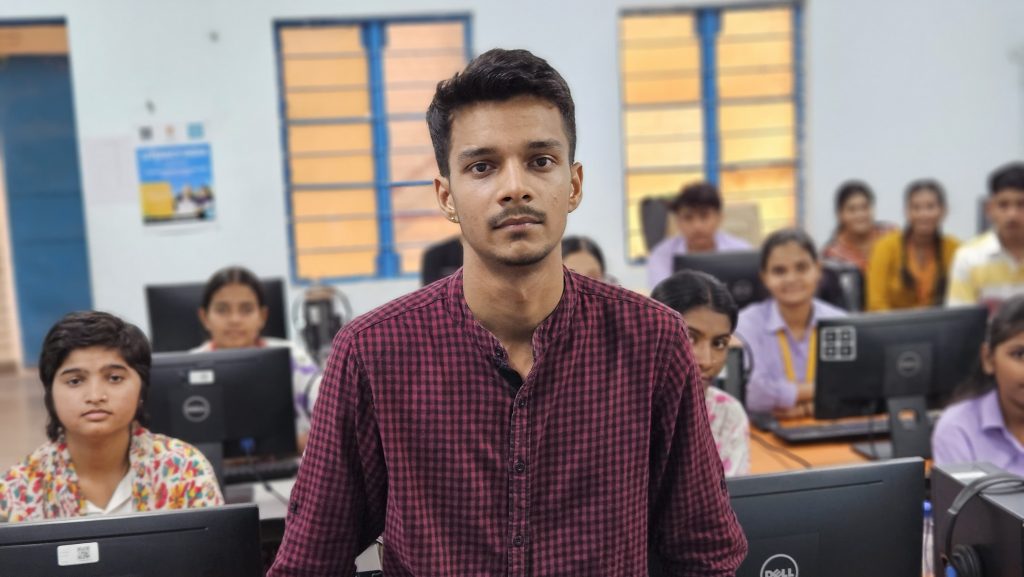
The Frontline Changemaker: Anurag Savita’s Journey from CCA Student to Community Torchbearer
In the bustling lanes of Kanpur, Uttar Pradesh, where the rhythm of life often drowns the unheard dreams of its youth, Anurag Savita quietly charts a different tune. The son of a humble garment shop owner, Anurag’s journey is one that binds purpose, perseverance, and people.
His story began as a student of Computer Centre Academy (CCA) in Bhimavaram. It wasn’t just another certificate for him—it became a spark. His internship soon brought him to Sheetal Colony, a location often overlooked, but not by him. What many saw as a congested urban sprawl, Anurag saw as potential waiting to be unlocked.
Over the past two years, Anurag has mobilised over 300 students into skill development initiatives under Literacy India. He didn’t just motivate them—he walked alongside them. Understanding the dire need for professional short-term courses, he advocated practical skills like bike and mobile repair, backend support, BPO training, delivery logistics, billing and accounts, and retail sales—skills that don’t just land jobs, but careers.
One such story is that of Satyam, a young technician whose commitment and growth were directly observed and reported by Anurag. His honesty and dedication earned him a well-deserved promotion—just one of the many such stories Anurag has helped script.
Despite the 80% of youth lacking grooming and formal education, Anurag never saw this as a barrier. Instead, he strengthened his role as a bridge—between ambition and access. His consistent follow-ups, including phone calls to HR departments of companies like Radical Minds and ILED, helped place many students. One student tearfully thanked him: “Aap nahi hote toh main kahin ka nahi hota” (If not for you, I wouldn’t be anywhere today).
His words to the youth are simple, yet deeply rooted:
“Koi bhi kaushal chhota nahi hota. Samay do, dhairya rakho, safalta zaroor milegi.”
(No skill is small. Give it time, be patient, and success will come.)
For Satya Prakash, Anurag isn’t just a mobiliser—he is among his “front warriors”, the first to step into challenging communities and make the change visible.
Anurag’s efforts today reflect Literacy India’s mission: to educate, to skill, and to transform. From a student to a changemaker, Anurag Savita is not just creating livelihoods—he’s crafting hope with every student he touches.

